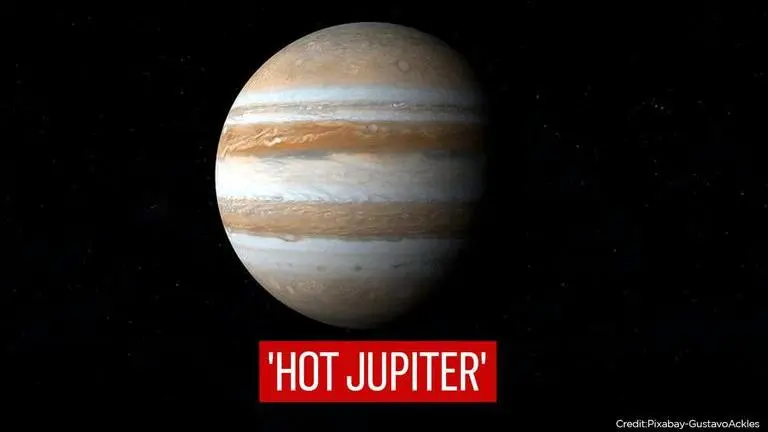Updated 25 January 2021 at 18:54 IST
Jupiter-like cloudless exoplanet discovered 575 light years away from Earth
Cloud-free exoplanets are exceedingly rare but astronomers have discovered one such planet 575 lightyears away from Earth which bears resemblance to Jupiter.
- Science News
- 3 min read

Cloud-free exoplanets are exceedingly rare but astronomers have discovered one such planet 575 light years away from Earth which bears resemblance to Jupiter in size. According to a study published in Astrophysical Journal Letters, the recent discovery was made by astronomers from the Center for Astrophysics at Harvard & Smithsonian. A team of fifteen scientists led by Munazza Alam, who is an NSF Graduate Research Fellow and a third-year graduate student in the Department of Astronomy at Harvard University, revealed that they used Hubble Space Telescope to record data and observe the planet using spectroscopy.
As per the research, the planet named WASP-62b is a gas giant which was first detected in 2012 through the Wide Angle Search for Planets (WASP) South survey. Its atmosphere, however, had never been closely studied until now. The planet known as a “hot Jupiter” is about half the mass of our solar system’s Jupiter, but unlike Jupiter, which takes nearly 12 years to orbit the sun, WASP-62b completes a rotation around its star in just four-and-a-half days.
In a statement to Harvard & Smithsonian, Alam said that for the thesis, her team worked on exoplanet characterisation and she further revealed that she discovered planets and followed them to characterise their atmospheres. In the study, Alam recorded data and observations of the planet. She specifically monitored WASP-62b as it swept in front of its host star three times, making visible-light observations, which can detect the presence of sodium and potassium in a planet’s atmosphere.
Advertisement
“I’ll admit that at first, I wasn’t too excited about this planet,” she said. “But once I started to take a look at the data, I got excited.”
‘Smoking gun evidence’
The researchers did not find any evidence of potassium, however, sodium’s presence was strikingly clear. The team was able to view the full sodium absorption lines in their data. Alam explained that clouds or haze in the atmosphere would obscure the complete signature of sodium and astronomers usually can only make out small hints of its presence. However, she called sodium’s presence around “hot Jupiter” a “smoking gun evidence” and added that her team was able to see a clear atmosphere.
Advertisement
Following the research, astronomers believe that studying exoplanets with cloudless atmospheres can lead to a better understanding of how they were formed. Alam said that their rarity “suggests something else is going on or they are formed in a different way than many planets”. She added that clear atmospheres also make it easier to study the chemical composition of planets, which can help identify what a planet is made of.
Published By : Bhavya Sukheja
Published On: 25 January 2021 at 18:56 IST
